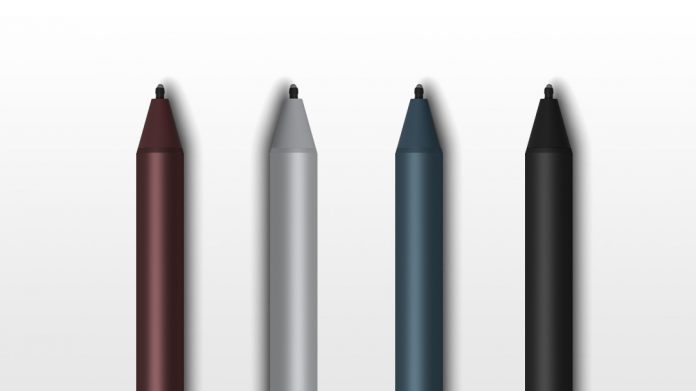The original loop concept was basically a strap to hold the Surface Pen to the Surface device. It would double as a charging method, but Microsoft has since moved on. Through several new Surface products, the pen has been magnetically attached to the device. Using a loop connection is a redundant concept. This shows why patents do not always point the way to the future. Companies often file patents to cover their bases and protect developments. Shiu Ng, Senior Hardware Engineer and Tim Jakoboski, Director of Hardware Engineering at Microsoft were the inventors of the loop Surface Pen patent. They have now updated their filing to change how the pen charges against the device.
Specifically, they have removed the loop entirely. The Surface Pen would instead have inductive charging elements in its casing. Inductive charging components would also be on the Surface device, where then pen attaches magnetically. The company has made the induction coil smaller, and it is now flat. This means the components could be placed anywhere on the device, including behind the screen. A hotspot would allow the Surface Pen to be charge directly on the screen. Microsoft could even implement several hotspots around the device, although this would be unlikely. By using modulation of the inductive charging elements, the Surface Pen would be able to communicate with the device.
Development of the Surface Pen
As usual, there is no guarantee that Microsoft will ever fully develop this patent. The filing was made May 12, 2017, so we will have to see if the technology makes it way to future Surface products. Interestingly, it was also in May that the company introduced the new Surface Pen. It brought lower latency and introduced true tilt functionality for the first time. With the new pen, Microsoft also added 4,026 levels of pressure sensitivity.





